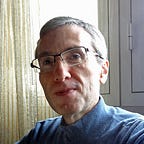Panspermia, Octopuses, and Comets 5/6
The biological Big Bang
At the basis of panspermia is the rejection of abiogenesis. As we have seen, according to Hoyle and Wickramasinghe calculations, the probability that the enzymes essential to the chemistry of living organisms have emerged in their entirety, complete and functional, at the end of a process of purely random accumulation of trial and error in the hellish conditions of the early Earth, is absurdly small. And enzymes are only one of the “cogs” necessary for the “machine” of life to work.
An irrelevant theory?
If their calculations are correct, then it might indeed be foolish to believe that life could have emerged here on Earth, in hydrothermal vents or elsewhere, only thanks to time and the presence of the right ingredients, assembled and remixed from time to time in random sequences. Without a fixed pathway capable of making the rapid emergence of life inevitable, the time elapsed between the consolidation of the Earth’s crust and the first fossil evidence of living organisms is too short. It is hard to believe that, from the astronomical number of possible combinations in which about twenty amino acids can combine in polypeptide chains, have come out, perfectly ordered and functional, all the very long chains of amino acids that form proteins and enzymes, essential for the…
